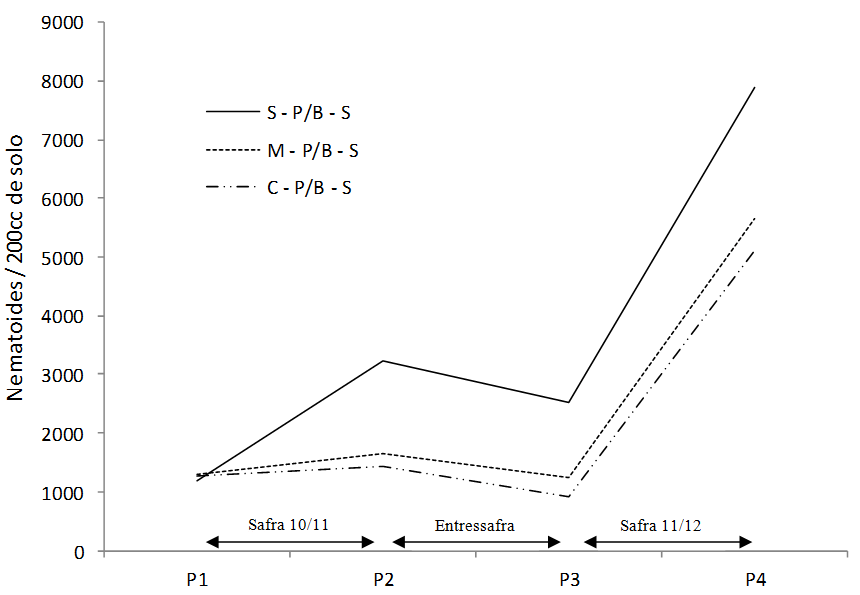The reniform nematode (Rotylenchulus reniformis) has become a growing disease problem to soybean crop. Considering the limited availability of soybean varieties that combine resistance to the nematode and other desirable agronomic traits, cultural management could be an approach for the nematode management. This study aimed to evaluate the effect of summer season crop rotations with corn or sunnhemp compared with soybean monocropping, and fall management with ruzizigrass as a covercrop compared to fallow on the nematode population. The experiment was carried-out in a naturally infested soil (1245 reniform nematodes/200cc soil) in a randomized block design, with six treatments arranged in plots with 6x3m (18m2) with four replications in a factorial 3x2 (summer crop x fall management). The nematode soil population density and its variation during the season as well as the soybean yield in the subsequent soybean crop were evaluated. Crop rotation with corn or sunnhemp led to the decrease on the reniform nematode population density compared to the monoculture of soybeans, with positive effects on soybean yield in the following season. There was no effect of cover cropping with ruzizigrass on the reniform nematode population
Brachiaria ruziziensis; Crotalaria ochroleuca; fall management; Glycine max; Rotylenchulus reniformis



